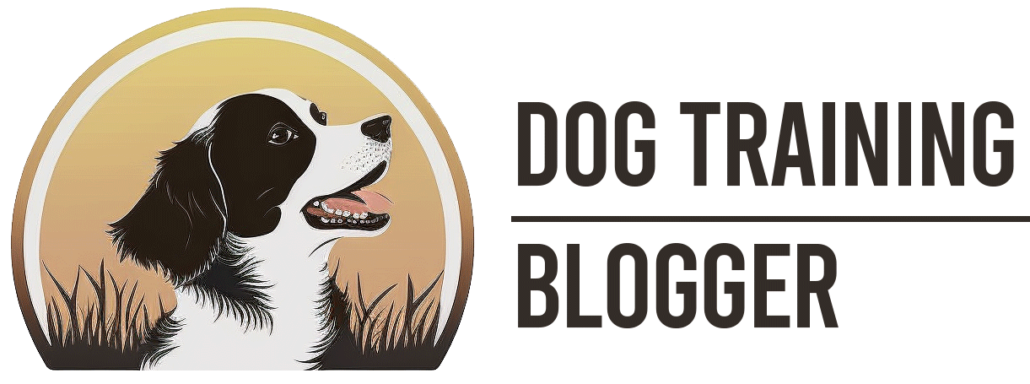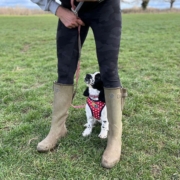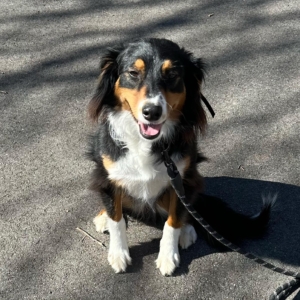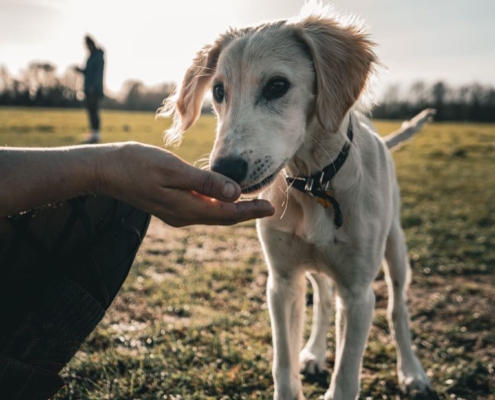Teaching Your Dog to Behave Around Food and Mealtime Manners
Teaching your dog appropriate mealtime manners is essential for maintaining a peaceful and enjoyable family dining experience.
A well-behaved dog during meals not only makes your life easier but also contributes to your dog’s overall well-being. In this blog post, we’ll explore how to teach your dog to behave around food and practice good mealtime manners. Even an eighth-grader can easily follow these tips and train their pet dog successfully!
| Take Away Points |
|---|
| Set clear boundaries for your dog during meals |
| Train your dog to wait for food patiently |
| Discourage begging and food-stealing behaviors |
| Manage mealtime excitement with calm techniques |
| Consistency, positive reinforcement, and involving the whole family are key |

Establishing Mealtime Boundaries
Designating a specific feeding area for your dog helps set clear boundaries during meal times. This area should be away from the family dining table to avoid confusion and distractions. Consistently enforcing no-go zones during family meals is crucial. For more tips on consistency in dog obedience training, check out this article.
Getting the entire family on board with the rules ensures that everyone is working together to maintain these boundaries. Discuss the importance of mealtime manners with your family and make sure everyone understands their role in the training process.
Building Impulse Control for Waiting for Food
Teaching your dog to wait for food is an essential part of impulse control training. Start by teaching your dog the “wait” or “stay” command. For more information on basic commands, see The 5 Basic Commands.
Gradually increase the waiting duration and reinforce the impulse control by rewarding your dog for their patience. Patience and timing are key factors in dog training; learn more about them here.
Preventing Begging and Food-Stealing Behaviors
To prevent begging and food-stealing behaviors, address the root causes by ensuring your dog’s nutritional needs are met and they have a consistent feeding schedule. Establish consistent consequences for unwanted behaviors, such as ignoring your dog when they beg or removing them from the room if they attempt to steal food.
Redirect and reward alternative behaviors, like lying down quietly in their designated area. For more on positive reinforcement, read this article.
Managing Mealtime Excitement for Calm and Controlled Feeding
Recognize signs of over-excitement during feeding times, such as excessive drooling, whining, or jumping. Help your dog calm down before eating by asking them to perform a “sit” or “down” command. Establishing a mealtime routine creates predictability and structure, which can help manage excitement.
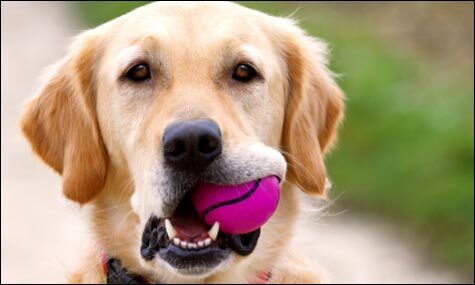
4 Tips to Improve Your Dog’s Mealtime Manners
Here are four simple, actionable tips to help with meal time manners.
Tip 1 – Consistency
Be consistent with mealtimes and feeding locations One of the best ways to establish good mealtime manners is by creating a consistent routine. Feed your dog at the same time and in the same location every day.
This helps your dog understand what to expect and reduces confusion or excitement around mealtime. Consistency also applies to any rules you set, like not feeding your dog from the table.
For more on the importance of consistency, check out our Consistency in Dog Obedience Training article.
Tip 2 – Teach the “go to your place” command
Teaching your dog the “go to your place” command can be an effective way to manage their behavior during mealtime. By directing your dog to a specific spot or bed, you create a clear boundary that keeps them away from the dining area.
With consistent training and reinforcement, your dog will learn to associate this command with staying in their designated area during mealtimes.
Tip 3 – Reward calm behavior
Positive reinforcement is key in shaping your dog’s behavior. If your dog remains calm and well-behaved during mealtime, reward them with praise, affection, or a small treat.
By doing this, you’re reinforcing the desired behavior and teaching your dog that good manners lead to positive outcomes.
Read more about positive reinforcement in our Positive Reinforcement Dog Training article.
Tip 4 – Involve the whole family
Training your dog to have good mealtime manners is a team effort. Make sure everyone in your family is on the same page when it comes to the rules and expectations for your dog’s behavior.
This includes not feeding your dog from the table, not giving in to begging, and reinforcing the “go to your place” command. By working together, your family can create a consistent and supportive environment that promotes good mealtime manners for your dog.
Involving the Family in Mealtime Manners Training
Consistency from all family members is crucial for effective mealtime manners training.
Communicate the rules and expectations to everyone and work together to reinforce good behaviors. Support each other and celebrate successes during the training process.
Maintaining and Reinforcing Mealtime Manners
Consistency and persistence are key to maintaining good mealtime manners. Reinforce your dog’s manners over time by rewarding good behavior and addressing unwanted actions promptly. Recognize and celebrate your dog’s progress, and remember that understanding your dog’s body language can help you identify any underlying issues. Read more about dog body language here.
And Finally
Teaching your dog good mealtime manners benefits both you and your furry friend. With patience, consistency, and positive reinforcement, you can help your dog become a well-mannered companion during family meals. Keep working on these skills, and enjoy a harmonious dining experience with your well-behaved dog!
By following these tips and techniques, you can create a peaceful and enjoyable dining experience for your entire family.
Remember that patience, consistency, and clear communication are essential for effective dog training. Additionally, you can also check out more teaching tips for your dogs through this website. With dedication and understanding, you can guide your dog towards better behavior around food and mealtime manners.
